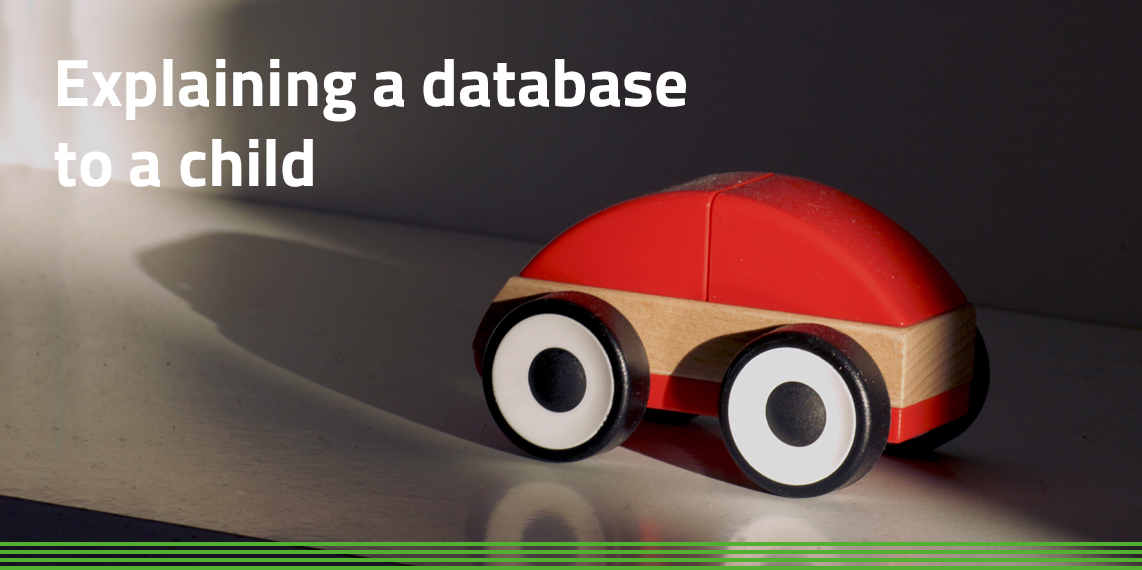Knowing how databases work is an essential skill in the modern workplace. They are a core component of virtually every single business and touch hundreds of everyday transactions more than most people realise.
For children growing up today, learning the fundamentals of databases, what they do, and how you can manipulate them is a core skill that will help set them for a future career path.
But what is the easiest way of explaining a database to a child who might just be getting started in tech and computing?
Explaining the concept of a database to a child
We asked one of the FunTech virtual tutors to give us a very brief overview of how databases are explained to kids in our term time virtual tech lessons plus by also using some great examples we also found online.
The explanations have been split into age groups, as you might explain the concept of a database to a 5-year-old differently to how you do to an 8-year-old. Both use the toy box analogy to give databases a relevancy to something that they already know.
Describe the concept of a database to a 5-year-old?
You can start by telling the 5-year-old that databases are like magic toy boxes. A magic toy box contains all of their toys, and they can put them into the toy box all messed up. But this magic toy box is like a database because it will shuffle all the toys around, putting them into order.
What this means is, because the magic toy box has ordered all the toys, kids can ask it for any toy they want, and it will quickly find it and give it to them. For example, if they want all of their toy cars, the magic toy box will sort those all and give them to them.
Or it could be that they want the magic toy box database to give them all your toy cars that are the colour blue. The magic toy box will quickly get those for them.
This explanation of the database concept to a child was inspired by an example found on the Core Java Interviews website.
How to explain a database to an 8-year-old?
Kids need boxes to store toys in, because if you don’t, they make a big mess on the floor and can get broken or lost. A database is like toy boxes as it lets you organise stuff to make it easier to find and use later on.
The Kids Codecs Magazine take this concept further with their explanation of the relational database concept to a child who is a bit older or with more understanding of complex concepts:
“The most common databases would store your toys in pieces. It might make sense, for example, to create a second box inside your toy box (database) to store all the heads of your dolls and another box to store arms. That type of database is called a relational database because it keeps track of which arms and heads go with (relate to) which dolls. But there’s a newer type of database which lets you keep your dolls in one piece. That kind of database is called a non-relational database.”
They then describe how a relational database works:
“Why break your dolls into pieces? In some cases, it makes finding stuff in a database faster. Imagine you need to keep track of many companies with multiple office locations. It might be easiest to have a database table for company names and another table for office locations and contact information. Toys are different. Breaking a doll into pieces wouldn’t help us find Fluffy in a toy box.”
Compared this to a complex database explanation in an encyclopaedia
Compare these concepts to how the Encyclopedia Britannica explains a database:
“Database, also called electronic database, any collection of data, or information, that is specially organized for rapid search and retrieval by a computer. Databases are structured to facilitate the storage, retrieval, modification, and deletion of data in conjunction with various data-processing operations. A database management system (DBMS) extracts information from the database in response to queries.”
Then they expand the definition further:
“A database is stored as a file or a set of files. The information in these files may be broken down into records, each of which consists of one or more fields. Fields are the basic units of data storage, and each field typically contains information pertaining to one aspect or attribute of the entity described by the database. Records are also organized into tables that include information about relationships between its various fields. Although database is applied loosely to any collection of information in computer files, a database in the strict sense provides cross-referencing capabilities. Using keywords and various sorting commands, users can rapidly search, rearrange, group, and select the fields in many records to retrieve or create reports on particular aggregates of data.”
Hopefully you find the ways of explaining databases to kids we highlighted a lot easier. Try using these database explanations with a 5-year-old, an 8-year-old, and up!
How FunTech teaches kids in term-time
At FunTech we run a series of term-time tech courses for kids and teenagers. Our online classes help them not only get ahead at school, but also prepare them for university and a future career in technology.
One of our more popular courses is TechStarter which gives children a head-start on the fundamentals of computing, including an introduction to databases.
Our tutors break everything down into easy to understand chunks, delivered in real-time over the Internet in a virtual classroom environment.
You can browse all our tech courses plus see how we can help your children get GSCE and A Level qualifications in technology this year.
Keep me informed
Be the first to know about Flash and Early Bird Sales as well as new courses, summer locations and more.
KEEP ME INFORMED





